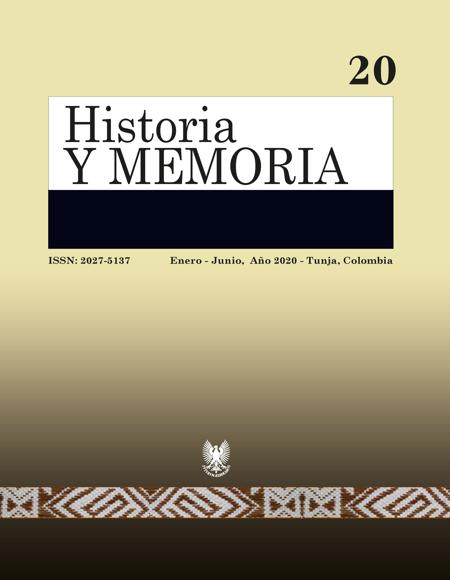Géométrie des formes et plan des tombes ilkhanides en Azerbaïdjan. Étude de cas: des tombeaux Quarabag Bardaeh

Résumé
Les VIIe et VIIIe siècles du calendrier Hiriji furent l’ère de
l’apogée de l’architecture en Azerbaïdjan. Pendant cette
période un style propre d’architecture funéraire fut développé: les tombeaux-tours. Son influence fut très étendue: depuis l’Azerbaïdjan jusqu’à Khorasan et le Turkestan à l’est, et jusqu’en en Asie Mineur et Mamluk, en Egypte. Vu la place centrale de l’Azerbaïdjan pendant la période ilkhanide dans la région, le style architectural connu après-coup sous le nom d’azéri fleurit dans cette période. De même que d’autres monuments religieux, les tombeaux-tours eurent une place de choix au sein de l’architecture islamique. Les exemples les plus remarquables sont le mausolée de Bardaeh à Qarabag, Sheikh Sai et Sheikh Heydar, Soltanieh, Ghaffarieh et Qara Baghlar. Le but de cet article est de reconnaître la structure
architecturale et décorative, ainsi qu’analyser les patrons géométriques utilisés dans les tombeaux d’Azerbaïdjan, en
insistant sur le cas paradigmatique de Qarabag Bardaeh.
Pour atteindre notre objectif, nous avons étudié les tombeaux à partir d’une stratégie interprétative et qualitative, en utilisant une analyse historique, bibliographique et de terrain. Les plans et les décors furent documenté, reconnus et analysés.
Mots-clés
architecture ilkhanide, Azerbaïdjan, tombeau Bardaech, plans, géométrie
Biographie de l'auteur
Behrouz Tavakkoli
Estudiante de doctorado, Facultad de conservación y restauración, Universidad de Arte de Isfahan, Irán. Perteneciente al departamento de Arte y Arquitectura de Payame Noor Universtiy en iran.
Raana Cinmarasl
Estudiante de doctorado, Facultad de Arquitectura y Urbanismo, Universidad de Arte Islámico Tabriz, Irán.
Références
References
Journals
Grabar, Oleg. «The Earliest Islamic commemorative structures, Notes and Documents.» Ars Orientalis Vol. 6, (1966): 7-46.
Hosseini, Seyed Hashem. «The introduction of the style of Azerbaijani sufis tomb construction.» Tehran, Honar-Ha-Ye-Ziba Memari-Va-Shahrsazi, n° 43 (2010): 57.
_______________. «The introduction of the style of Azerbaijani sufis tomb construction.» Honar-Ha-Ye-Ziba Memari-Va-Shahrsazi, n° 43 (2010): 57.
Books
Ali Yazdi, Sharaf al-Din. Zafarnameh, Mohammad Abbasi Printing. Tehran Tehran: Library, Museum and Document Center of Iran Parliament, 1957.
Aslanapa, Oktay. Kirim ve Azerbaycan´da türk Eserlei. Istanbiul: Baha Matbaasi. 1979.
Azhand, Ya'qub. Marashian, Ghiam. Tehran: Amirkabir publisher, 1986.
Conel, Ernest. Islamic Art, traducido por Hooshang Taheri. Tehran: Tous, 1976.
Ettinghausen, Richard., y Oleg Grabber. Islamic Architecture, trad. Yaghoub Azhand. Tehran: Moli, 2007.
Gharavi, Mehdi. «Tomb in Iranian culture..,» Cultural Works Association. Tehran: The organization of print and publication of Ministry of Culture and Islamic Guidance, 1997.
Hillenbrand, Robert. Iran Arts, under the direction of R. W., Frieh, trad. Parviz Marzban (Tehran: Forouzan, 1995), 260.
________________. Islamic Architecture, trad. Iraj Etesam (Tehran: Urban Process and Planning of Tehran Municipality Publication, 2004), 126.
________________. «Tombs.» En Iranian Architecture of Islamic Period, Vol. I, by Mohammad Youssef Kiani. Tehran: Academic Center for Education, Culture and Research, 1987.
Karim, Pirnia. Stylistics of Iranian Architecture. Tehran: Soroush Danesh, 2008.
Kiani, Mohammad Youssef. Cities in Iran. Tehran: Ministry of Culture and Islamic Guidance publications, 1992.
________________. History of Iranian Art and Architecture in the Islamic Period. Tehran: The Organization for Researching and Composing University Textbooks in the Humanities, 2004.
Khavand Shah Mirkhand, Mohammad Ben. The date of rozat al-Safa. Tehran: sin lugar de edición, 1958.
Memmedoğlu, H.S., İ.R. Emiraslanoğlu,. H.A. Necefoğlu., y A.A. Mürseloğlu. Motiflerin Dili (Turkey: Konya- Selçuk Üniversitesi İlahiyat Fakültesi Dergisi. 14, 2002)
Necefoğlu, Hacali. «Selçuklu Mimarîsinde Kristallografik Nakışların Yeri.» En III. Selçuklu Kültür ve Medeniyeti Semineri Bildirileri 20-22 Mayıs 1993. Turkey: Konya, 1994.
Pope, Arthur Upham. Iranian Architecture Volume I, traducido por Gholam Hossein Sadri Afshar. Urmia: 1987), 205.
Willber, Donald. Islamic Architecture of Iran during Ilkhani Period, traducido por Abdollah Farriar. Tehran: Book Translation and Publishing House, 1967.
